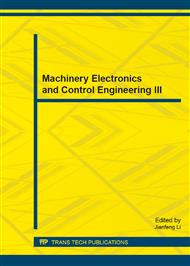p.3
p.7
p.11
p.15
p.19
p.22
p.26
p.31
p.36
Study of the Interfacial Reaction between the Sn-3.5Ag Solder and Electroless Ni-P Metallization
Abstract:
This work summarizes the interfacial reaction between lead-free solder Sn-3.5Ag and electrolessly plated Ni-P metallization in terms of morphology and growth kinetics of the intermetallic compounds (IMC). Comparison with pure Ni metallization is made in order to clarify the role of P in the solder reaction. During reflow, the IMCs formed with the Ni-P under-bump metallization (UBM) exist in chunky crystal blocks and small crystal agglomerates, while the ones with the sputtered Ni UBM exhibit uniformly scallop grains with faceted surfaces. The IMC thickness increases with reflow time following approximately a t^sup 1/3^ power law for both systems. The IMC growth rate is higher with the Ni-P UBM than the Ni UBM. The thickness of the Ni^sub 3^Sn^sub 4^ layer increases linearly with the square root of thermal aging time, indicating that the growth of the IMCs is a diffusion-controlled process. The activation energy for Ni^sub 3^Sn^sub 4^ growth in solid-state reaction is found to be 110 kJ/mol and 91 kJ/mol for the Ni-P and sputtered Ni UBMs, respectively. Kirkendall voids are detected inside the Ni^sub 3^P layer in the Sn-3.5AgTNi-P system. No such voids are found in the Sn-3.5AgTNi system.
Info:
Periodical:
Pages:
19-21
Citation:
Online since:
December 2013
Authors:
Price:
Сopyright:
© 2014 Trans Tech Publications Ltd. All Rights Reserved
Share:
Citation:


